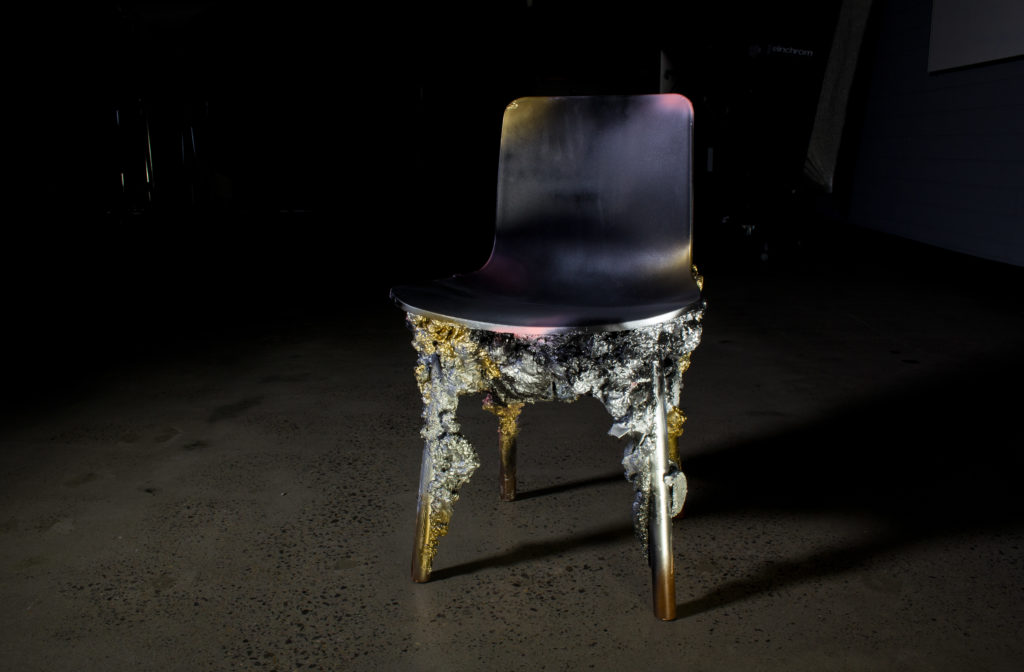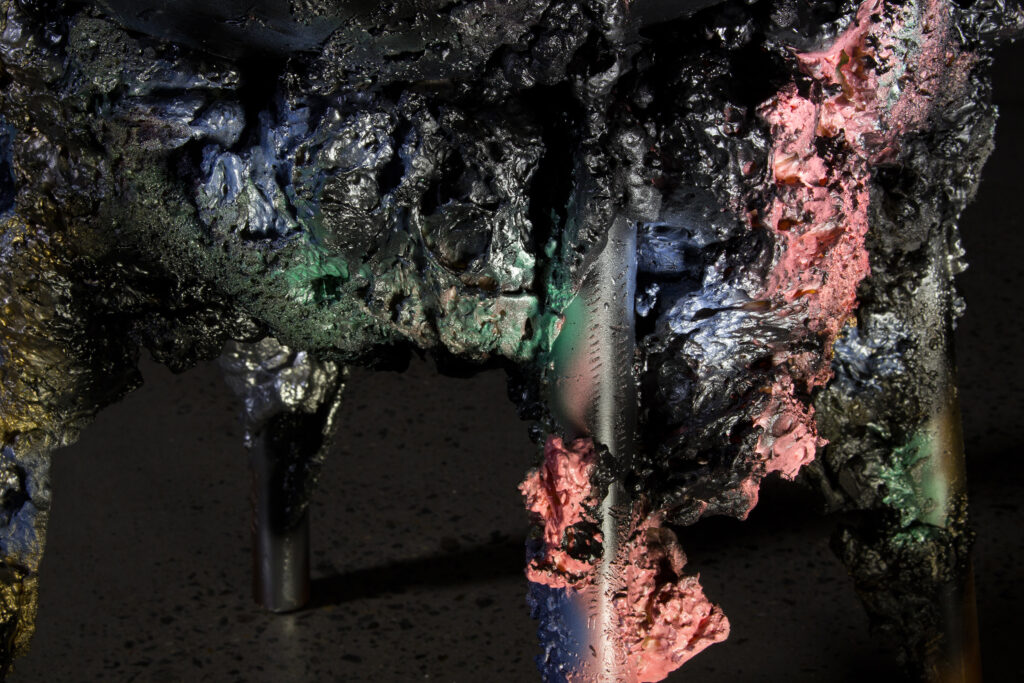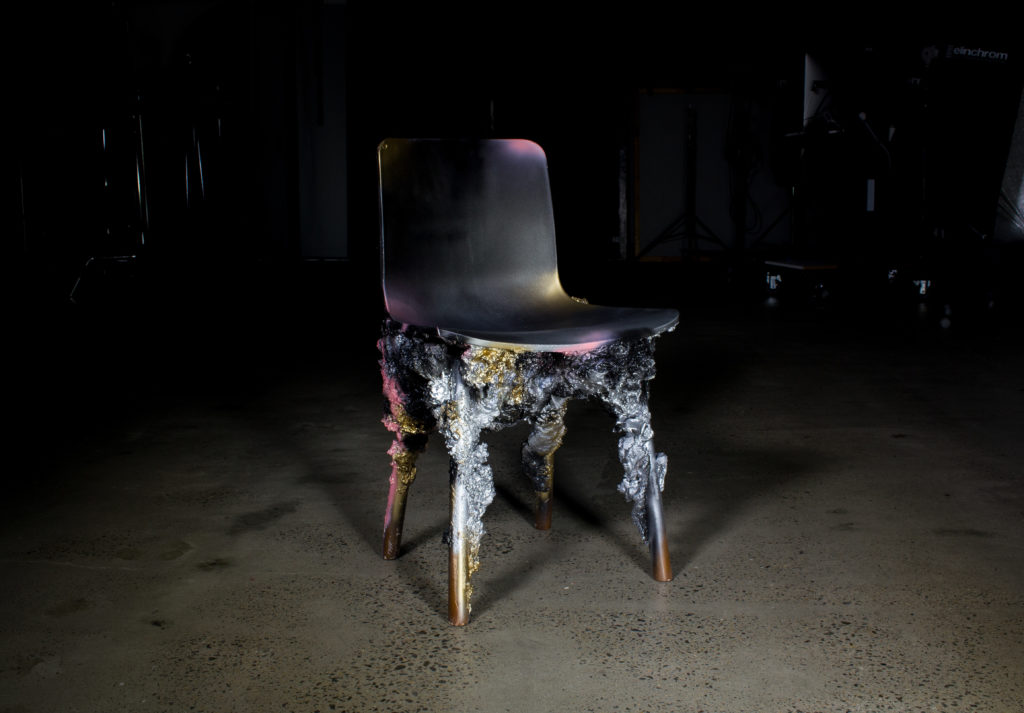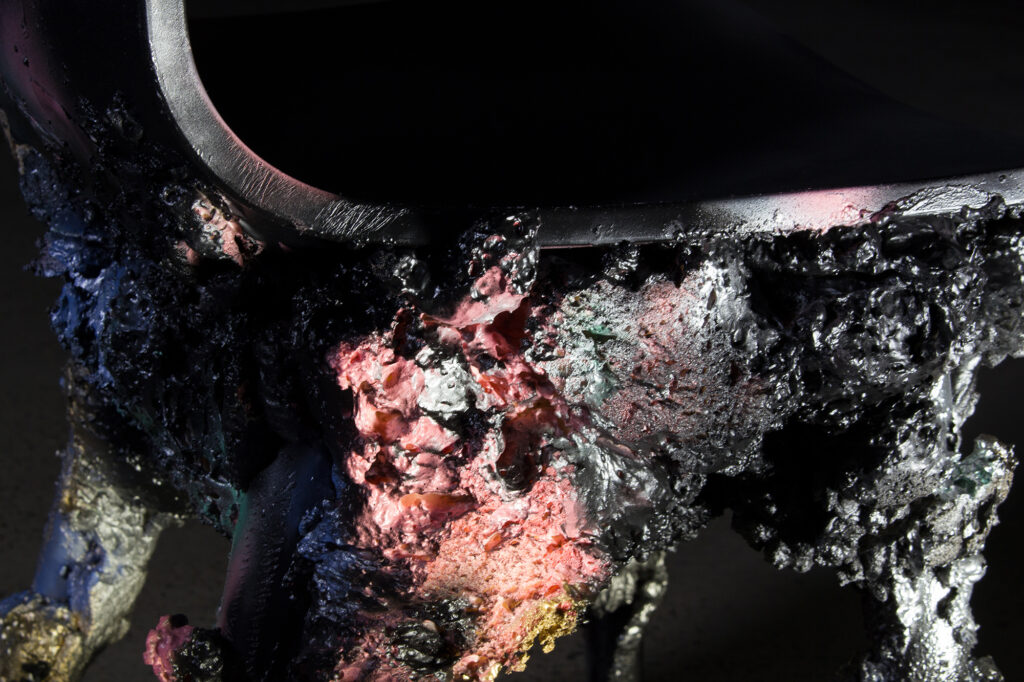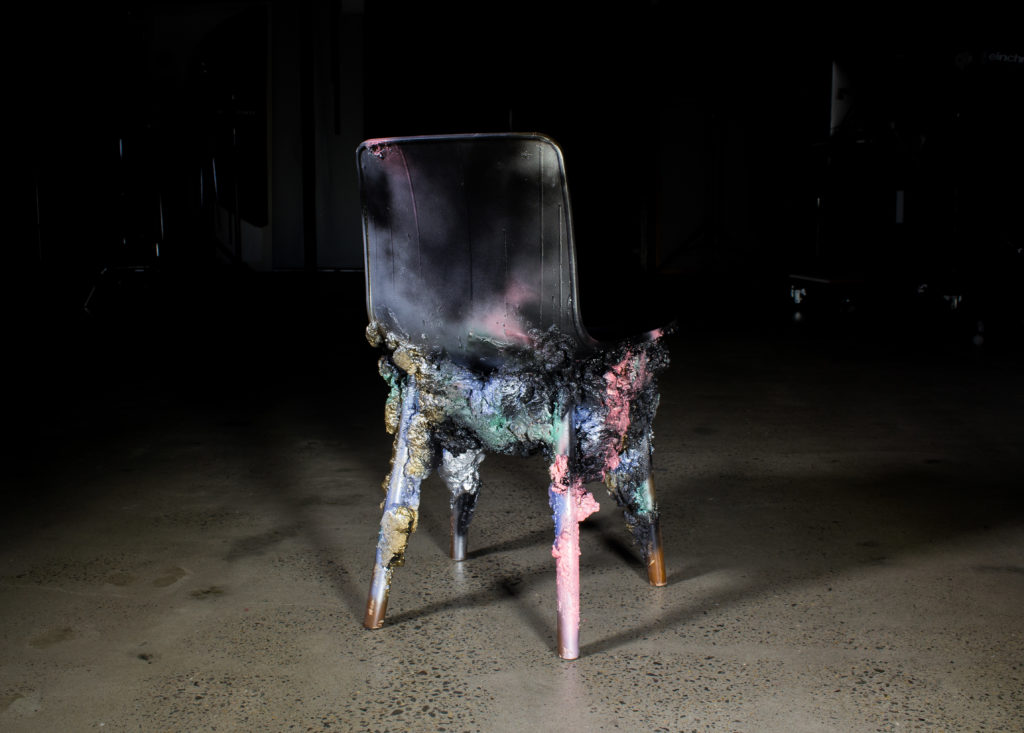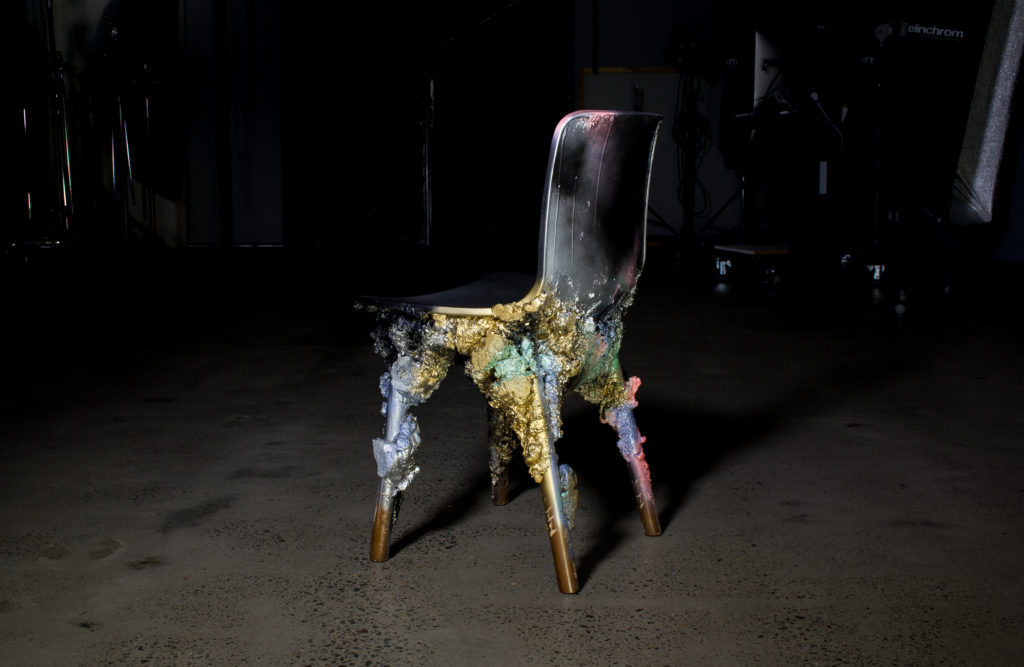Manufacture Unknown: Chair for 26 Original Fakes
This work is my contribution to the Melbourne Design Week 2017 event, 26 Original Fakes, developed by Friends & Associates.
Friends & Associates invites 26 contemporary Australian designers to reconfigure and exhibit an existing replica design as a way to deconstruct how the design object is valued. Questioning how replica furniture draws focus to issues of authenticity, creative practice and the commercial market, the first realisation of Friends & Associates takes the theme ‘Design Values’ to consider how the design community can hack and reevaluate the replica. Each contributor has been given a replica Jasper Morrison HAL Wood Chair.
In the text provided by Friends & Associates, the HAL chair was noted to be widely copied by “manufacturers unknown” This is a key point for me because it clarifies that the chair, and any other replica, but also brand originals, are manufactured products. It is easy to ignore that this means they are borne from and immersed within in a vast array of material conditions that concern the extraction of planetary resources aggregated over billions of years and extends towards processes of decay, waste, de- and re-composition.
A key point is this: too much of the discussion around replica concerns abstracted qualities and information such as design and engineering concepts, formal and intellectual properties, moral rights, financial matters or branding arrangements.
But the really important consequences and harms of replica furniture, and in fact the real harm in any furniture or consumer product, full stop, is material. It is the body of resources and energy used to produce something, to extract a material from the ground or forest and make something that in all probability begins life creating pollution and ends it, sooner or later, as waste.
The real problem with replica furniture, that are grounded in material condition, is that any lack of authorship and branding – the “unknown” quality of manufacture – when combined with the market strategy of undercutting competitors, facilitates cost-cutting. This cost-cutting leads to high obsolescence, poor durabilities and an overall lack of quality. Such furniture becomes waste sooner. This doesn’t just hurt the customer, or an aggrieved original designer. It harms everyone and all worldly things.
And it is that, and only that, which compels me to disrespect the fake. I could care less about intellectual property issues in design, and I care only as much as they foster durability and quality. The authorship and business arguments are inconsequential in the face of the global and local problems of waste, resource depletion and pollution. And much intellectual property law is theoretically suspect in an increasingly digital society anyway. Cry me a snowflake. Designers should be smart and able to survive and flourish in any form of social, political or legal culture. But none of us can flourish if our ecology is ruined and our resources squandered.
Right now we could reduce this problem, and likely give a boost to original design and local manufacturing by implementing importation and sale policies requiring documentation and proof of ethical, environmentally sound production. There is no reason why we should allow the sale of products made with child labour, or with hazardous by-products – though that still happens – and similar regulations could extend widely to many other detrimental processes of production. I like to think designers have a vested interest in such regulations as an ethical imperative, but better yet, they have a greater capacity to comply with them due to their personal and intense knowledge of their products and investments into authorship and branding.
But for now, we should try to not see chairs and tables and other products in the way most designers actually wish us, in their streamlined, shiny, homogenous and affordanced glory. Rather we should attempt to see through such products, and beyond into their messy and weighty relations. We should see them as complexities of powerful, pollutive processes that extract and convert material, of organic and inorganic minerals, petrochemicals, ancient animal bones, plants, rocks and gasses… …to which this perhaps ugly, malformed, modified replica chair is designed to draw your attention.
Manufacture Unknown: Materials
The following materials were used or are included:
A Chair made from some kind of steel (an alloy of carbon and iron with other metals that may include manganese, nickel, chromium, molybdenum, boron, titanium, vanadium, tungsten, cobalt, and niobium), polypropylene (a thermoplastic polymer synthesised from a catalyst and the monomer propylene [petrochemicals extracted using fractional distillation and other industrial processes from petroleum {the bodies of plants, animals and other living organisms anaerobically decomposed over millions and millions of years}]), and some kind of wood (primarily a composite of lignin [organic cross-linked phenolic polymer] and cellulose [organic polysaccharide compound] in a porous, fibrous structure found in tree stems and roots)
Expanding Spray Foam a kind of polyurethane made from isocyanate (treated amines [extracted from ammonia {a naturally occurring substance now most commonly sourced as a byproduct of coal-fired power plants}] with phosgene [an industrial reagent made from carbon monoxide and chlorine gas] and some kind of polyol resin (an alcohol with multiple hydroxyl groups {likely petrochemical – see petroleum}] and hydrocarbon [like from a crude oil source – petroleum] and dimethyl ether [dehydration of methanol {synthesis gas <some kind of hydrocarbon feedstock, potentially natural gas, coal, or a biofuel source>}]
Concrete cement (cooked and crushed limestone [calcium carbonate {shells, corals and the bodies of other sea animals composited into rock over millions and millions of years}]) with a pozzolanic material (probably fly ash [coal fired power plant byproduct]), sand and aggregate (various rocks and minerals from an unknown source)
Spray paint unknown petrochemical polymers and hydrocarbon propellant
Shellac ethanol and the resin secreted by the female lac bug (Kerria lacca)
Epoxy resin polyepoxide, a cross-linked thermosetting polymer (polymerised ethylene oxide [silver catalysed ethylene {steam-cracked petrochemical – see petroleum}])
Steel screws carbon, iron and other metals – see steel
Plus some other random shit I had laying around in my studio, including paper, packaging labels, aluminium swarf and sawdust (from mostly Pine, some Tasmania Oak – see wood)
